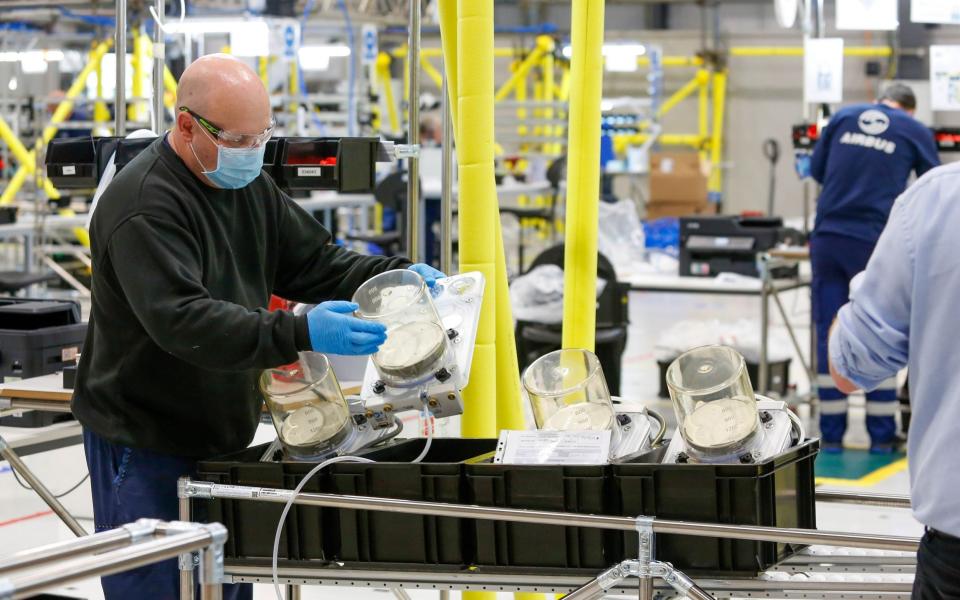UK growth tipped to outstrip US and Europe

Britain will clock up faster economic growth than the US and Europe next year as the recovery is turbocharged by the country's world-leading vaccination scheme and a Treasury spending spree, the International Monetary Fund has said.
The UK will be the fastest growing advanced economy in 2022, the fund (IMF) said, as it upgraded its growth forecasts after millions of people were jabbed to protect them against Covid-19.
Overall, it expects the world economy to suffer less scarring than after the financial crisis due to an unprecedented multi-trillion pound spending blitz by developed nations to contain the damage.
In its World Economic Outlook, the IMF predicted bumper UK growth of 5.3pc in 2021 and 5.1pc next year as it catches up with other nations following one of the biggest GDP hits from the pandemic. This would mark the strongest growth since 1988, but output is not expected to return to pre-virus levels until next year.
The IMF now expects UK growth to be 0.8 percentage points greater than previously predicted this year, propelled by the rapid vaccine rollout and extra economic relief announced by the Chancellor in his Budget.
IMF chief economist Gita Gopinath said: “[The UK] is doing exceptionally well on the vaccination front and the expectation is that by sometime in July they will get to truly widespread coverage, in which case the economy opens up at that time so that is looking promising.
“Also there was the additional stimulus that was provided in the March Budget round. We welcome the extension of some of the lifelines into this year.”
The IMF expects global growth to bounce back to 6pc this year, followed a 4.4pc rise in GDP in 2022 - faster recoveries than expected at its last update in January. World GDP contracted by 3.3pc in 2020, it said.
This global recovery will be boosted by jab rollouts, economies adapting to lockdown and Joe Biden’s $1.9 trillion (£1.37 trillion) stimulus package in the US.
The world's largest economy was also handed a big upgrade with US growth expected to reach 6.4pc in 2021, helping it surpass pre-virus levels in the first half of the year.
Meanwhile the eurozone was given much more modest upgrades as its jab rollout struggles. The region will still enjoy growth of 4.4pc in 2021, helped by a faster recovery in Italy, and will regain its pre-pandemic economic size more quickly than Britain.
The IMF said: “Thanks to unprecedented policy response, the Covid-19 recession is likely to leave smaller scars than the 2008 global financial crisis."
While advanced economies will suffer little or even no scarring, it warned the developing world would lag behind in “multispeed recoveries”, widening the gulf between living standards in rich countries and poorer ones.
It also said that the recovery comes with growing financial risks as markets have boomed and businesses have borrowed heavily to survive the pandemic.
The IMF said that some companies are showing signs of struggling to pay the interest on their debts.
It said: “With easy financial conditions (necessary to support growth in the short term), corporate debt may rise further from already high levels, putting medium-term growth at risk.
“A growing debt burden, together with weaker earnings, has already started to impair the capacity of many firms to service debt.”

 Yahoo Finance
Yahoo Finance 